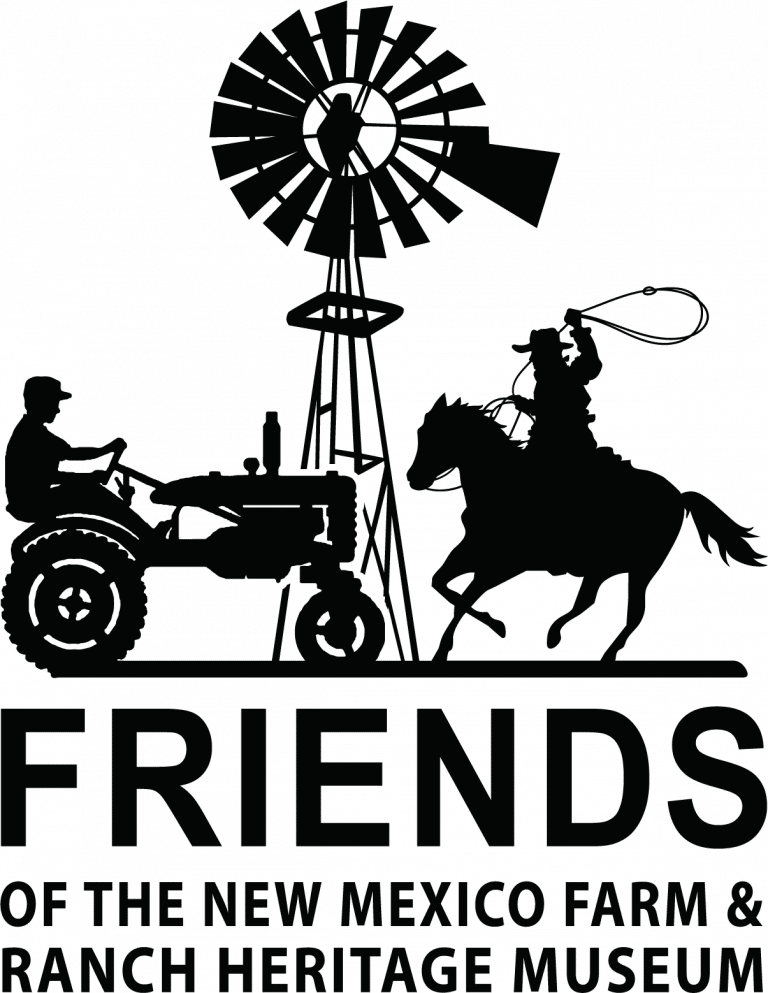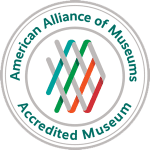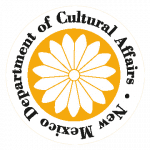
History
Though open only since May 1998, the story of the New Mexico Farm & Ranch Heritage Museum extends back about 30 years.
Dr. William P. Stephens, the former director and Secretary (1972-1988) of the New Mexico Department of Agriculture (NMDA), is often credited with the vision for preserving the history of farming and ranching in New Mexico. He was worried that this history was being lost, both as early twentieth century settlers passed away and as valuable artifacts and archival collections left New Mexico. He conceived of a program that would recognize pioneering and long-time farm and ranch families.
His thoughts were reinforced and refined by Dr. Gerald Thomas, the newly appointed president of New Mexico State University (NMSU) in 1970. Having been involved in the creation of the Ranching Heritage Center at Texas Tech University in the late 1960s, Thomas encouraged Stephens’ vision. Over several years the men shared the vision with agricultural producers around the state, leading to the first formal meeting of farmers, ranchers, and other interested persons in 1987.
In early 1989 these supporters incorporated as the New Mexico Farm and Ranch Heritage Institute Foundation, a grassroots organization to raise funds for a proposed museum using the theme “So the Future May Know.” At the same time many organizations and the state legislature passed resolutions supporting the concept. Stephens, after retiring from NMDA in 1988, led the efforts as the Foundation’s first director.
For many years both Stephens and Thomas envisioned the project to be tied, literally and figuratively, to New Mexico State University. In the end, the university’s involvement was limited to leasing the site on which the Museum has been built. The administrator for the project became the state Office of Cultural Affairs (OCA).
The passage of the Farm and Ranch Heritage Museum Act in 1991 established the Museum and its policy-making board. The existing Foundation board then became primarily responsible for raising money, whether privately or through legislative lobbying, to carry out the programs of the newly created Museum.
In October 1993 Stephens died, having lived long enough to see the concept gain momentum but not having seen a final product. The day-to-day management of the Foundation fell to Lana Dickson (1993-1999), the public relations coordinator at NMDA. Also in 1993 OCA hired Tom McCalmont as the Museum’s first director (1993-1994).
McCalmont, Dickson, and other supporters were successful in lobbying the legislature to appropriate $7.4 million for the design and construction of a facility that would serve as the main museum building. During the design process it was realized the originally proposed site would not be large enough.
The Museum’s second director, J. Edson Way (1994-1998), secured a 47-acre site on NMSU property just outside the Las Cruces city limits on Dripping Springs Road.
Ground was broken for the new Museum in August 1995. The event was not the typical groundbreaking; after a group of Heritage Riders rode in on horseback delivering shovels and a post-hole digger to the dignitaries, volunteer Alvin Davidson plowed across the building site with his 1937 Deere tractor. The first livestock arrived in December 1995–a herd of nineteen Longhorn cattle formerly from Chicosa Lake State Park.
Dedication of the Museum took place on April 19, 1997, with an estimated 4,000 people in attendance. Under J. Edson Way and his interim successor, Ellen Campbell (1998-1999), museum staff collected artifacts and oral histories and began building the first exhibits. The Museum opened to the public on May 17, 1998.
The first major annual events — Cowboy Days (1999) and La Fiesta de San Ysidro (2000) — took place under the Museum’s third director, Mac Harris (1999-2005).
In 2004 the Museum’s main building was rededicated in honor of former New Mexico Governor Bruce King. Starting under Harris, through interim director Toni Laumbach (2006), and through to the leadership of Mark Santiago (2006-2020), and Heather Reed (2020-current), Museum staff continue to plan and develop permanent and temporary exhibit spaces and exterior facilities in a multi-year plan to complete the Museum.




